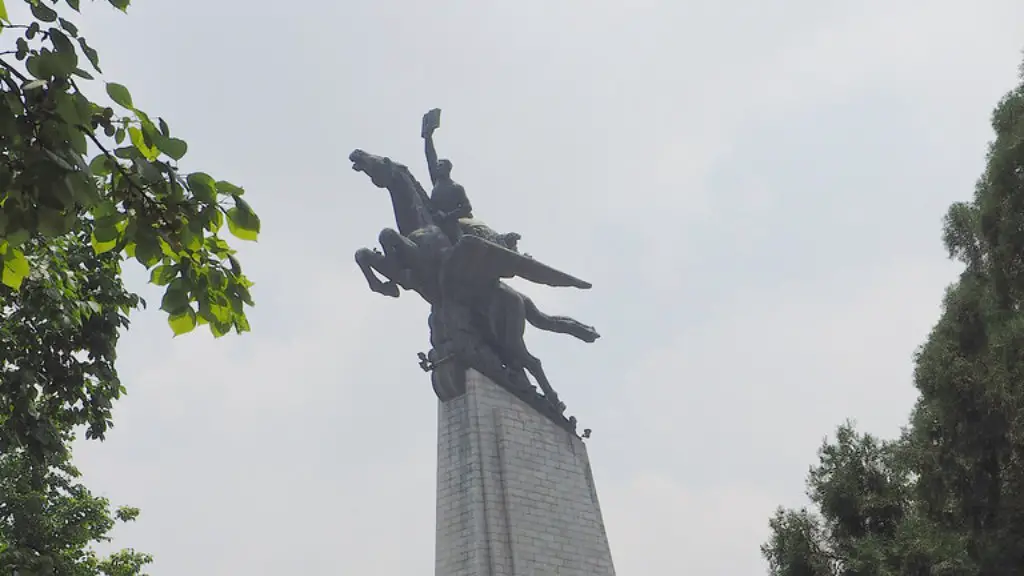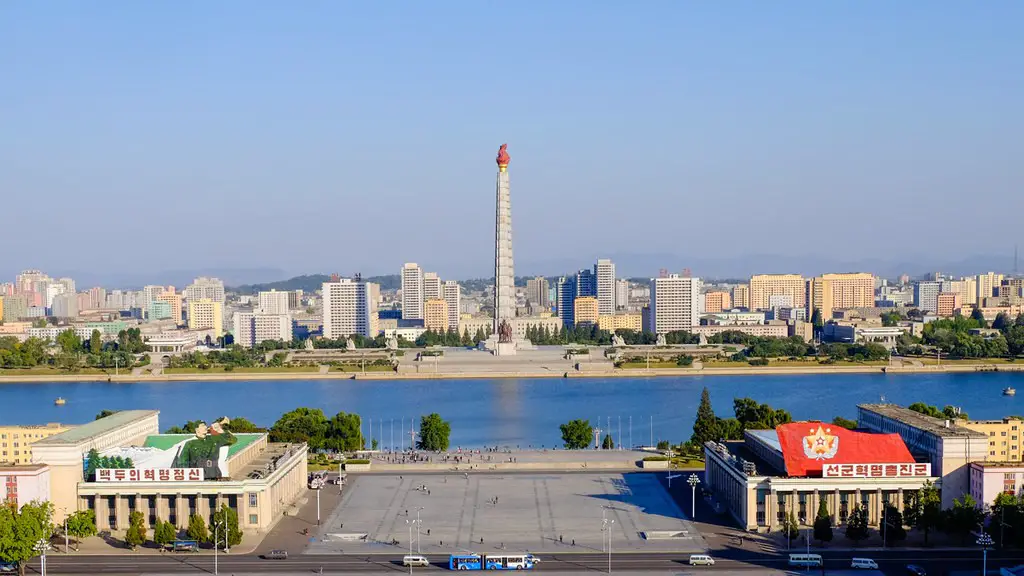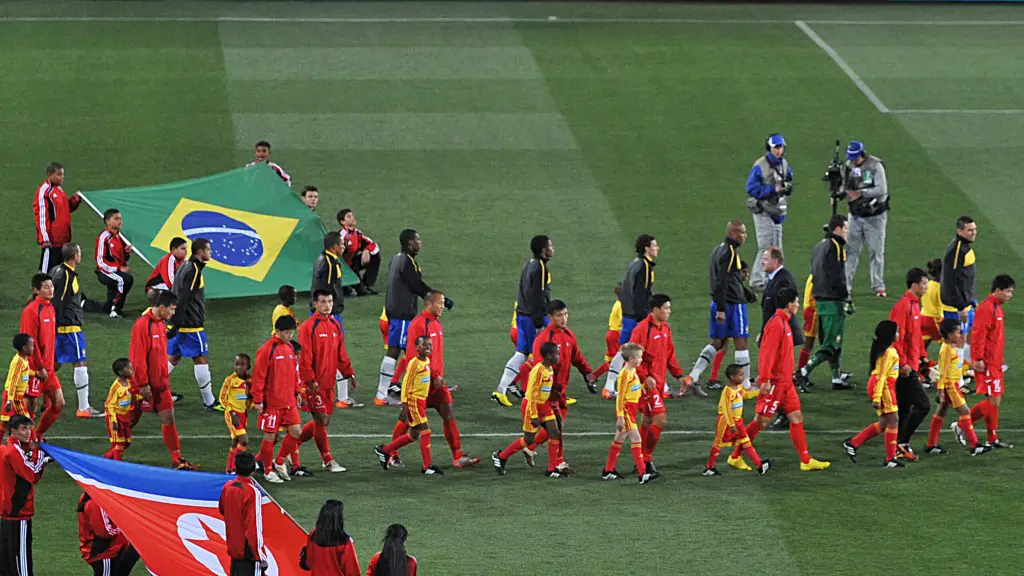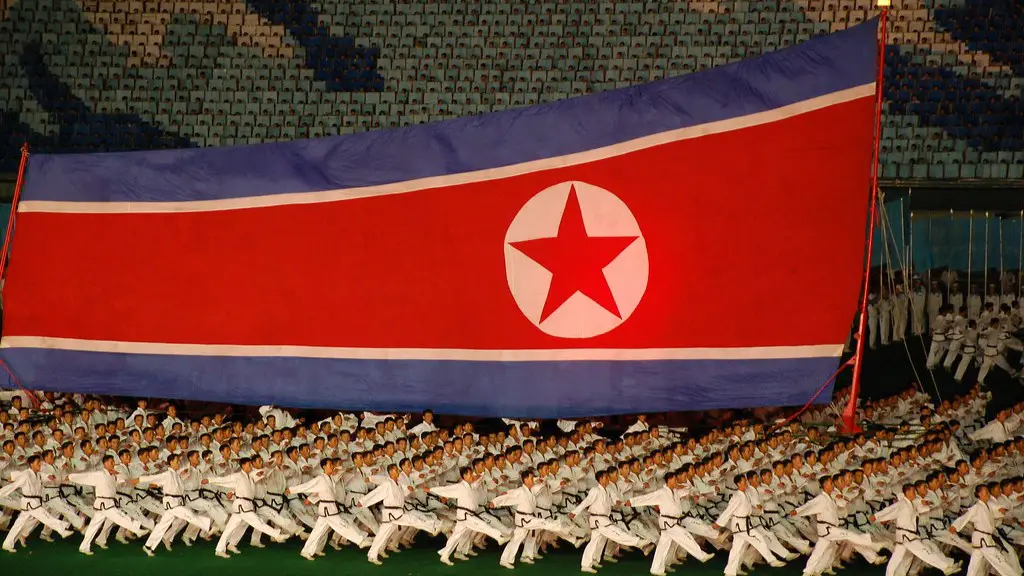The History of the Separation
The history between North Korea and South Korea is complex. Prior to their separation, the two countries were unified under the Korean Empire, established in 1897. After years of Japanese occupation, the empire was dissolved and replaced with the Second Republic of Korea in 1948. North Korea, on the other hand, declared its own government, the Democratic People’s Republic of Korea. The two countries then declared war on each other in 1950, beginning over three years of conflict.
The signing of the 1953 armistice effectively ended the Korean War and established the Korean Demilitarized Zone (DMZ) along the border. This division between the two countries has become increasingly entrenched over the decades. While the two countries have signed non-aggression treaties, there is still a tense atmosphere between the two sides.
The Economic Situation
The two countries have vastly different economic conditions. North Korea’s economy is widely believed to be in a state of crisis. The International Monetary Fund (IMF) estimates that its economy contracted by 0.3% in 2020, while South Korea’s economy expanded by 2.7%. North Korea is also one of the most isolated nations in the world, as it has limited access to international markets and technology.
In contrast, South Korea has made remarkable economic and political gains over the past two decades. It is now considered to be one of the most successful developed countries in the world and is a member of the G20. South Korea’s economy is driven by exports and its reliance on large international companies such as Samsung and Hyundai.
The Impact of International Relations
North Korea’s relationship with its neighbours and the international community has had a significant impact on its ability to reintegrate with the South. In recent decades, attempts have been made between the two countries to ease tension, with high-level talks being held in both Seoul and Pyongyang. However, tensions still remain between the two sides and North Korea has continued to develop its nuclear weapons programme.
The United Nations and other international bodies have passed a number of resolutions that are meant to press North Korea to abandon its weapons programmes. These include an embargo on exports and imports and a travel ban on key North Korean officials. Such measures are meant to reduce the North’s ability to develop weapons, but have made it more difficult to reintegrate the two countries.
The Views of Different Stakeholders
Experts and analysts are divided on the potential for reuniting the two Koreas. Some view it as highly unlikely, due to the entrenched political and economic differences between the two countries. Others argue that reunification could open up new economic opportunities for both sides and bring peace to the region.
On the other hand, North Korean leaders continue to see reunification as an existential threat to their state. They remain fiercely independent and are committed to preserving their way of life. North Korea also believes that reunification would lead to the domination of the South and the loss of their identity.
South Korean citizens, on the other hand, have mixed views on reunification. While many older citizens, who lived through the war, view it as overly ambitious, younger generations are more open to the idea. Thus, the views of South Koreans are largely linked to the economic and political costs of reunification and the potential for a more prosperous future.
The Potential for Reunification
Despite the challenges of reunifying North and South Korea, some experts believe it is still possible. According to some, this could be achieved through and economic union between the two countries, which would allow them to benefit from one another’s expertise and resources. Such an arrangement would also promote greater cooperation and trust between the two sides while allowing them to remain politically independent.
Others argue that reunification is a necessary step towards peace and stability in the region. The two countries share a common language, culture and history, and it is believed that reunification would bring them closer together and promote greater understanding.
For reunification to be successful, both North and South Korea need to work together to bridge the political and economic divide. This includes opening up to international trade, reforming their economies and improving relations with the international community. While these challenges are significant, there is still hope for a more peaceful future.
The Role of Foreign Powers
Reunification efforts between the two Koreas are largely dependent on the actions of foreign powers. China and the United States have significant influence over the Korean peninsula and have the power to put pressure on both sides to reach an agreement.
The US has been particularly active in the Korean peace process, having held multiple summits with both North Korea and South Korea. As the most powerful nation in the world, the US is in a unique position to encourage the two countries to work towards a peaceful resolution.
On the other hand, China is North Korea’s closest neighbour and has long been seen as a key ally. China has been accused of propping up the North Korean regime, but has also recently expressed its willingness to help reunify the two countries. It remains to be seen if China will take a more proactive role in the peace process.
Russia has also been involved in Korean affairs for decades, with Putin recently voicing his support for a peaceful reunification. Russia has a large presence on the Korean border and has been a vocal advocate for stronger ties between North and South.
The Future of Korean Relations
The future of North and South Korea’s relationship is uncertain. While there has been some progress in recent years, there are still many obstacles to overcome. It will take a sustained effort from both sides to bridge the political and economic gaps that exist between them.
The role of foreign powers will also be paramount in the reunification process. China, the US and Russia are all heavily involved in the peace process and have the power to pressure the two countries to reach an agreement. They have also expressed their willingness to support reunification efforts and work towards a peaceful resolution.
Despite the challenges, there is still hope for a more peaceful future. With renewed international support and a strong commitment from the two sides, reunification could be within reach. Only time will tell if North and South Korea’s relationship will be strengthened by this renewed effort.
The Relationship Between Koreans Abroad
Koreans who have left their homeland are increasingly joining forces to push for peaceful unification. In recent years, there has been a surge of cooperation between North and South Korean citizens living abroad, as they advocate for greater understanding and cooperation amongst the two countries. This includes lobbying efforts, cross-border initiatives and humanitarian aid efforts.
These efforts have been widely welcomed by the international community, as they demonstrate the potential for reconciliation. Such initiatives are also seen as an important step towards a greater sense of unity between the two Koreas. In addition, they provide a platform for North and South Koreans to engage in a meaningful dialogue and promote understanding.
The strongest proponents of reunification are the Korean diaspora, who are often caught in between the political tensions of their home countries. Korean-Americans and Korean Canadians are some of the most vocal proponents of reunification, as many have family members living in both North and South Korea. In addition to sounding the alarm for peaceful unification, the Korean diaspora has also called on their governments to take more proactive measures in promoting reconciliation.
The Role of Civil Society
Civil society organizations have played an important role in efforts to reunify North and South Korea. These organizations are often involved in advocacy and humanitarian efforts, such as providing aid to those in need and promoting educational and cultural exchanges. These efforts not only assist in improving the lives of Koreans living in both countries, but also serve as a platform for peaceful dialogue.
In recent years, a number of organizations have begun to specialize in bridging the gap between North and South Korea. These include the Korea Peace Network (KPN), the Korean Peninsula Peace Activists Forum (KPPAF) and the Korean Unification Forum (KUF). These organizations represent a range of perspectives and have become major proponents of dialogue, understanding and unification.
The efforts of civil society organizations have been widely lauded by international observers. In particular, these groups have been credited for helping to maintain lines of communication between the two countries and providing an alternative to political dialogue. Civil society organizations have also been instrumental in facilitating important dialogue between the two governments.
Conclusion
The reunification of North and South Korea remains a distant prospect, but recent developments suggest that there is still hope for a peaceful resolution. Both sides have made efforts to bridge the political and economic divide, while international powers have stepped in to lend their support. Likewise, civilians and civil society organizations have made a concerted effort to promote understanding and dialogue.
The future of Korean relations still remains uncertain, but there is still a glimmer of hope. With the support of the international community, the two Koreas could be one step closer to reunifying. Only time will tell if they will be able to overcome their differences and work towards a brighter future.





